Stories Behind the Songs: Leland Sklar
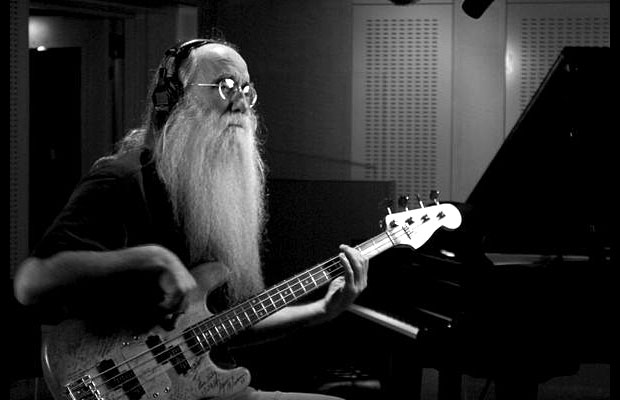
With over 2,500 albums under his belt, Leland Sklar is more than a seasoned pro. He’s a legend.
A staple of L.A. studio scene, Sklar put his stamp on music of all genres for over four decades with artists like James Taylor, Reba McEntire, Billy Cobham, Phil Collins, and more. The bassist is lovingly referred to as the “King of the Whole Note”, always playing bass lines that fit the song rather than something flashy.
“I’ve always been a song guy, and I like to figure out where things work best,” Sklar stated. “In my heart of hearts, I’m a real simple player. I don’t intellectualize [anything.] I don’t think about it; I just live in the moment. I really love moving around the neck, but to me it has to be justified. To me, I’ve always looked at my career as every note I play, I have to justify why I’m there in my mind. It’s easy to throw a part down, but to make a part that takes that song and adds whatever your job is supposed to be to it [is special].”
Sklar was a budding pianist before switching to double bass at an early age. His focus was on classical music, though he grew to love pop and rock music. This diversity aided his musical development and ideas, which in turn fueled his creativity. In the studio, he often write his own lines. “I would say 80% of the time it’s my ideas, and the other 20% is either they’ve got a chart written out note-for-note or the producer or artist has an idea they want me to try.”
While he’s used a host of different amps over his career, there’s one axe that he sticks with. “The thing that’s kind of interesting is that I’ve used pretty much one bass on 90% of everything I’ve ever played. It doesn’t matter if it’s fusion or if it’s Reba or anything, I use this one bass of my called my Frankenstein bass. It was never a real bass, it was just all these pieces. I’ve been using Euphonic Audio for a long time. They have a really beautiful little combo that I use. We usually go direct and then mic that.”
We reached out to Sklar to get his take on his favorite tracks he’s played on as well as No Treble readers’ favorites.
1. “Stratus” – from Billy Cobham’s Spectrum (1973)
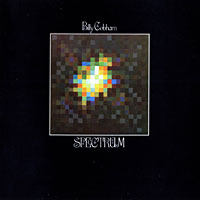 As I recall, Billy was originally going to do it with Stanley Clarke. I think when they got together there was just too much blowing and not enough hunkering down. So Billy called me and asked if I’d like to come to New York to do an album. We did it at Electric Ladyland. I flew in on a Sunday, we worked all day Monday and Tuesday, and I flew home Wednesday and it was done.
As I recall, Billy was originally going to do it with Stanley Clarke. I think when they got together there was just too much blowing and not enough hunkering down. So Billy called me and asked if I’d like to come to New York to do an album. We did it at Electric Ladyland. I flew in on a Sunday, we worked all day Monday and Tuesday, and I flew home Wednesday and it was done.
Those two days were so intense. It was almost like an out of body experience. I couldn’t even hear myself because I had a little Univox amp and it was set up right in front of Billy’s kit, which is basically like sitting with a bunny in front of a freight train. It was like you almost didn’t even know what you did until you went and listened to a playback.
There was nothing really written out. I think once we started playing that, I got into that bass line and just sat there. I think that was part of the appeal to Billy, was the fact that I was just holding it down and I wasn’t starting to go off of it and blow. You have to get into this headspace [to play the line.] Billy has a unique quality that when he fills, he rushes like there’s no tomorrow, but he always is there for the downbeat. So you’re trying to hold this bass line down and he’s just flourishing all over it, then he’s there at the downbeat. You can’t go with his fill, otherwise you’re lost when you come back in. I was in a zone. It takes about a bar and a half to lock in. We’re kind of riding a little bit until it really hunkers down, and that to me is the charm of this record. It’s tight but it’s really loose.
It’s a song that took on it’s on life. Then Massive Attack lifted it and used it. I’ve had people come up to me when we’re playing it and say, “Oh, you guys are doing that Massive Attack tune,” and I have to say, “No, it’s kind of the other way around.”
2. “Your Smiling Face” – from James Taylor’s JT (1977)
 We really were always just in the moment. There was never any kind of thinking about 20 years later when people would be checking it out. We were just happy to be cutting it and wanted to get on the road immediately and start gigging stuff after we cut it.
We really were always just in the moment. There was never any kind of thinking about 20 years later when people would be checking it out. We were just happy to be cutting it and wanted to get on the road immediately and start gigging stuff after we cut it.
Back in ’71 Yamaha came to Los Angeles with a pile of prototype basses. They gave me one, and Abe Laboriel, Sr. and eight or so other guys, got these prototype instruments that the Japanese wanted us to evaluate for them. The bass they gave me for that was the bass I used on “Smiling Face”. It was kind of like a Japanese Yamaha ripoff of a P-bass. Same kind of set up and all that. All the things I hated about it that I told them, they never changed.
A lot of that, too, is a combination of me playing, the bass, and Val Garay, who is still one of the best engineers I’ve ever worked with. You start to put those kind of perfect storms together and it really happens. It was an interesting tune in the fact that it kept modulating. Then that section is the closest to a pop as I’ve ever made on a record, because that’s not what I like in my repertoire so I try to avoid it at all costs. I’m not a “Mr. Slap Pop Funky” guy.
3. “How Sweet It Is (To Be Loved By You)” – from James Taylor’s Gorilla (1975)
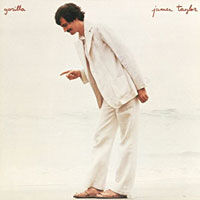 We did it at Amigo Studios in the North Hollywood area. The thing I love about James it that he can make anybody’s song sound like he wrote it. [James’s version of] “How Sweet It Is” wasn’t really Marvin Gaye, but it has that feel of it with the James kind of lyrical, folky kind of spin on it.
We did it at Amigo Studios in the North Hollywood area. The thing I love about James it that he can make anybody’s song sound like he wrote it. [James’s version of] “How Sweet It Is” wasn’t really Marvin Gaye, but it has that feel of it with the James kind of lyrical, folky kind of spin on it.
I just remember those dates were fun. When we would go in to do those records – all of James’s stuff – for the most part we just kind of lived in the studio. We’d order in food and just be there. Sometimes you go into the studio and it was daytime, and you’d come out and it was night time, but then by the time you came out you realized you missed one night and the next day. We’d be there for 72, 90 hours sometimes, just plowing through this stuff and playing songs over and over and rearranging and coming up with ideas. There was just a vitality and energy then that would happen both in the studio and on tour, and I think “How Sweet It Is” became one of those songs.
4. “Children of the Sun” – from Billy Thorpe’s Children of the Sun (1979)
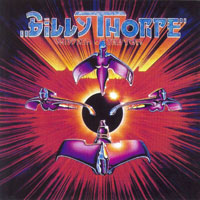 Billy Thorpe was a huge child star in Australia. We did this album and it was a conceptual album that he came up with. Spencer Proffer produced it in his studio in Hollywood called Pasha. We cut it as a trio: it was me and Billy and Alvin Taylor on drums. Billy was great. He was so strong and powerful and into it. He had such a commanding presence.
Billy Thorpe was a huge child star in Australia. We did this album and it was a conceptual album that he came up with. Spencer Proffer produced it in his studio in Hollywood called Pasha. We cut it as a trio: it was me and Billy and Alvin Taylor on drums. Billy was great. He was so strong and powerful and into it. He had such a commanding presence.
When we did that album it was another one that became a deep, deep cult thing. We went out and did a few gigs with it and it was really, really fun to play live. I’ve got a bass rig sitting in a warehouse that I put together specifically for playing with Billy. We played Santa Monica Civic out here in L.A., and it took over a semi just for our three guys’ band gear. When they pulled my bass rig in and set it up, they thought it was the PA system. The bass bins were two “W”-folded cabinets that are so huge that it takes like four guys to lift each one. I had two of those, then on top I had four midrange cabinets that were the same shape but they were front-loaded. Then I had four high-end speakers mounted on top of those. I made a trade with the guy who owned Altec Speakers. I had a pile of Yamaha P2200 amps and he wanted a couple of those. I gave him two of mine and he gave me two Altec 1000-watt mono amps. So each bass bin was run by a 1000-watt mono Altec amp. I had six more P2200’s driving all the midrange stuff, and then I used an SVT as a preamp for the rig.
Bob Easton at the time had come up with the 360 Systems Bass Synth, which was a pickup system that ran off the bass, and a guy named Wayne Yentis put this whole thing together. I had a transposition pedal hooked up for the bass synth that I could literally hit my low E string and drop it almost three octaves. We were getting down in the area of 6Hz at probably about 130dB. The first time we actually tested it we all threw up and cracked a wall in the warehouse. It was fantastic.
5. “Another Day in Paradise” – from Phil Collins’ …But Seriously (1989)
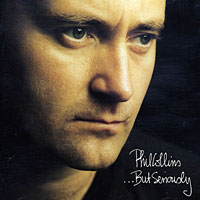 That was the first track we actually did on the album. We did it out at Genesis farm. The hardest part of working with Phil was that we would never play together. It would be one guy at at time. Phil would get the songs prepared in his mind, usually with a drum machine part. A lot of times he didn’t have any lyrics for songs. He would just kind of hum like a melody part.
That was the first track we actually did on the album. We did it out at Genesis farm. The hardest part of working with Phil was that we would never play together. It would be one guy at at time. Phil would get the songs prepared in his mind, usually with a drum machine part. A lot of times he didn’t have any lyrics for songs. He would just kind of hum like a melody part.
I was the first guy in, so when we did “Another Day in Paradise”, I really had to craft a bass line around almost no song, and then he worked with that. My memory was that Hugh Padgham, who was engineering and co-producing the stuff, had gotten involved with a syndicate campaigning an F-1 car in Europe. He spent almost all his time on the phone with sponsors, so the second engineer was doing all the work. At one point, I’m sitting there coming up with bass line and I’m trying an octave pedal and all this other stuff. I looked over and Phil is sitting with Hugh [in deep thought]. Finally he looks over at Hugh and asks, “What kick drum sample is that that we’re using on this?” And I yelled over, “Excuse me! How is the bass part?” Phil said, “Oh, that’s good, that’s good.” I’m sitting here thinking, “He’s listening to the [expletive] kick drum that he’s going to replace anyways!” [laughs]
For the most part, on things like “Another Day in Paradise”, it was pretty much [that] I would do my bass parts and Daryl would come in and do the guitars, then Phil would come in later and lay the drums down. It never felt like it when you listen to the end product that it was piecemeal-put-together because we really knew each other. When we would do it this way, it would always sound like a band, but I always wish we could have cut it live.
6. “Sussudio” – from Phil Collins’ Serious Hits… Live! (1990)
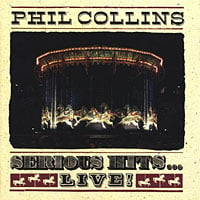 It’s all machine on the studio album. The first time I heard it in the studio, I looked at Phil and said, “Man, we just got painted into a corner.” So what we ended up doing on the first tour we did, we had a sequence running that for the bass part was all the filter part that was in there. I was playing the tonal part on bass, so I was the tonal part of the lick. But as time went on, we thought that if we really make it swing, we don’t need that stuff either. So we got away from that whole part of it and I just played the bass line. It was fat enough and grooving hard enough where it didn’t really matter. By the time we were a couple of years into playing that song, it had completely turned into a real organic version.
It’s all machine on the studio album. The first time I heard it in the studio, I looked at Phil and said, “Man, we just got painted into a corner.” So what we ended up doing on the first tour we did, we had a sequence running that for the bass part was all the filter part that was in there. I was playing the tonal part on bass, so I was the tonal part of the lick. But as time went on, we thought that if we really make it swing, we don’t need that stuff either. So we got away from that whole part of it and I just played the bass line. It was fat enough and grooving hard enough where it didn’t really matter. By the time we were a couple of years into playing that song, it had completely turned into a real organic version.
When Phil did a lot of his vocals, he would go out and just sing off the top of his head. He would have a melody line, but he would just go with the moment and so he would throw words out. I think he fully intended to replace Sussudio with another line, but he just never found one that felt right so he kept that. So it’s nothing, it was kind of a flow of consciousness.
7. “Jammin’ with Jesus” – from Steve Lukather’s Ever Changing Time (2008)
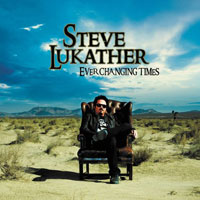 Apparently, Luke had cut that with Jeff Beck on one of his records, and Jeff didn’t like it so they shelved it. He pulled it out when we were doing his album and we basically cut it as a trio with he and myself and Abe [Laboriel, Jr.]. I was just looking for something unique on it, so I think we pulled out maybe a SansAmp or a Tech 21 DI that had some controls on it, and just pushed everything as far as we could get it to make it as distorted as we could possibly get it. I love a chance just to get away from that nice, rich, clean bass and do something completely twisted and out without losing the bass part. If you start affecting it too much, you’re gonna get eaten up. We got [the track] in one pass.
Apparently, Luke had cut that with Jeff Beck on one of his records, and Jeff didn’t like it so they shelved it. He pulled it out when we were doing his album and we basically cut it as a trio with he and myself and Abe [Laboriel, Jr.]. I was just looking for something unique on it, so I think we pulled out maybe a SansAmp or a Tech 21 DI that had some controls on it, and just pushed everything as far as we could get it to make it as distorted as we could possibly get it. I love a chance just to get away from that nice, rich, clean bass and do something completely twisted and out without losing the bass part. If you start affecting it too much, you’re gonna get eaten up. We got [the track] in one pass.
8. “Doctor My Eyes” – from Jackson Browne’s Jackson Browne (1972)
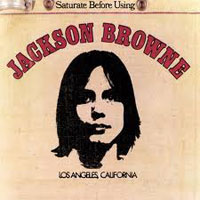 The thing with “Doctor My Eyes” that was so interesting, was that when we cut the basic track, Russ [Kunkel] played congas on it, not drums. The whole track was percussion, then he overdubbed the drums later. Then when Jesse Ed Davis came in to do the guitar solo on it, we’d already cut the track. He said, “Well, let me hear it,” and started noodling away playing a solo. When he finished, he said, “Okay, let’s do it,” and Jackson said, “No, that was perfect.” So it was one of those weird, bass-ackwards tracks that kind of defied the norm at that point.
The thing with “Doctor My Eyes” that was so interesting, was that when we cut the basic track, Russ [Kunkel] played congas on it, not drums. The whole track was percussion, then he overdubbed the drums later. Then when Jesse Ed Davis came in to do the guitar solo on it, we’d already cut the track. He said, “Well, let me hear it,” and started noodling away playing a solo. When he finished, he said, “Okay, let’s do it,” and Jackson said, “No, that was perfect.” So it was one of those weird, bass-ackwards tracks that kind of defied the norm at that point.
9. “Doing the Meatball” – from The Section’s The Section (1972)
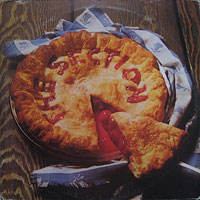 The beauty of doing instrumental music is you don’t have to give a [expletive] what you call it. So there’s this kind of nebulous quality. “Doing the Meatball” was just kind of goofy, like you were going to go out and “do the meatball.” That’s the beauty of music – without a lyric to hang it on, you can just call it whatever you want. We were probably eating Italian or something like that!
The beauty of doing instrumental music is you don’t have to give a [expletive] what you call it. So there’s this kind of nebulous quality. “Doing the Meatball” was just kind of goofy, like you were going to go out and “do the meatball.” That’s the beauty of music – without a lyric to hang it on, you can just call it whatever you want. We were probably eating Italian or something like that!
It was a real fun little tune with a giddy attitude to it. It’s not deep and heavy. We brought Michael Brecker in to play sax. It was such a good band.

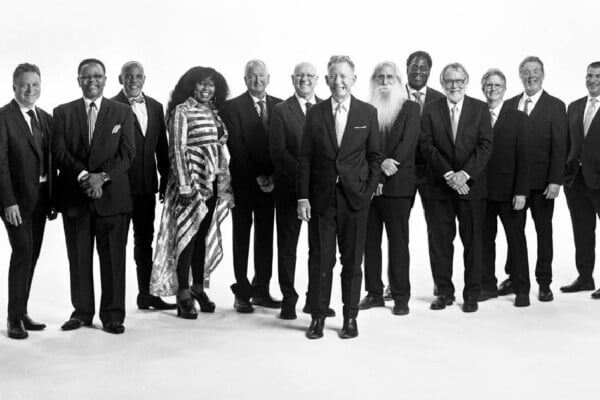
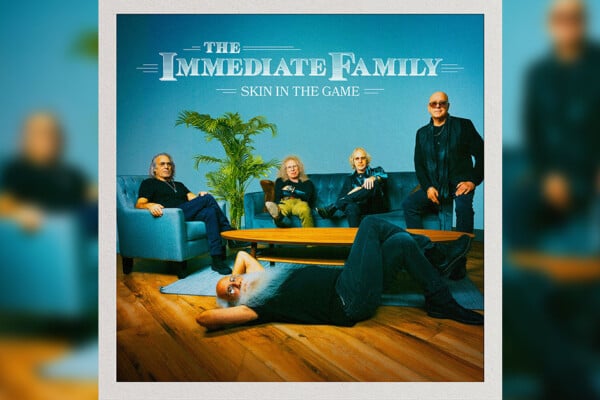
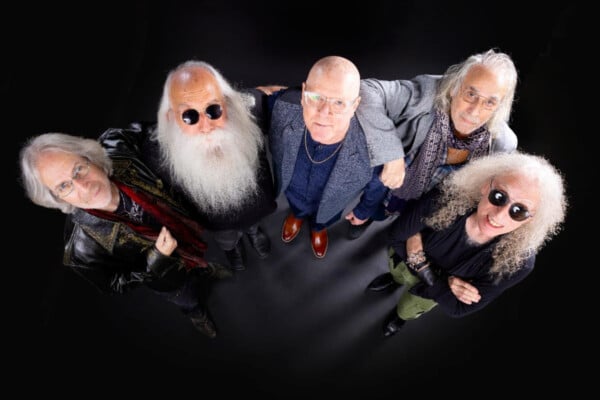
Great article. Lee Sklar is my all time favorite bass player.
He always played for Jackson Browne when I saw him in concert so many times, so many years ago…sigh.
I learned about him from listening to James Taylor and Phil Collins. But he’s everywhere. He has recorded and toured with tons of musicians. He was even the bass player for the Oscars this year (maybe more years, too).
Lee Sklar is one of my biggest influences as a bassist. No fancy “Bass Olympics” trickery- play what the song needs and that’s all.
awesome. LEGEND. don’t forget ‘thousand miles’ – vanessa carlton.
Dude, f-cking LEGEND
God lord everything that man plays is just so tasty…it’s certainly no coincidence that he’s been asked to play on over 2,500 records…
HIS DAD AND MOM USED TO LIVE NEAR MY PARENTS HOUSE.
groooooove master
I can’t believe “New York Minute” is not top ten.
That was Pino Palladino on “New York Minute”
Lee Sklar is a badass….and just look at that beard!
He looks like “Ol Saint Nick”
That is the German Santa.
I was thinking he looked like Dumbledore here. And I suppose Leland could be considered a true bass mage :)
Every line Leland has laid down over the years is flawless. He is among the few who set the bar that all studio bassists aspire to! Long may he continue to groove….
Never heard of him but I do have the “Spectrum’ album.
I used to cover Stratus with a band I was in and man is it a work out! Its one of those rare songs where as a Bassist I can’t wait for the breaks bcause my hand is always on the verge of cramping after a few bars playing the groove!
I have about 30 albums (different styles) in my collection where he features in the credit page. From Phil Collins, where I discovered him, to Amanda Marshall, James Taylor, Jamie Walters to name a few. This guy is a real inspiration to me as musician but he seems to be a good human being. He’s funny too (always has a finger for everyone in the crew!) I’d really like to sit an hour with him to chat ’bout everything, ‘sure it wouldn’t be wasted time. Respect to Mr. Sklar.
love this guy… salute to mr lee sklar…
“We were getting down in the area of 6Hz at probably about 130dB. The first time we actually tested it we all threw up and cracked a wall in the warehouse. It was fantastic”… I haven’t laughed so hard in weeks. Thanks Lee Sklar!
Genius bass grooves…. Interesting article!
I am Scott Edwards, bass player on Hall Oates, Sara Smiles. I have the union contract and Ed Greene, the drummer and Clarence McDonald keyboardist, can verify I played the bass on Hall & Oates, Sara Smiles. I thought you were beyond stealing credit for other players’s work.Lee.
I notice that Scott Edwards and Lee Sklar were both shown in Wikipedia as on the album Sara Smile is from. The bass part sounded a little bit more soulful than I would expect out of Sklar, who is on fave albums of mine by James Taylor and Jackson Browne. Since NoTreble posted this and not Sklar, a decent journalist would clear this up instead of making Sklar look like a credit-thieving a-hole if in fact Edwards turns out to have played that particular song’s bass parts. Sklar got enough fame without taking away from Edwards. PLEASE, NOTREBLE, clarify which one played on that song or change the track to one Sklar did play on since Sklar is clearly also on the album.
I believe that Lee Sklar is the best “all around” bass player in the business. He colors the bottom end of a song discreetly, perfectly, tastefully; and doesn’t get in the way of the message to song is setting out to convey. In fact, he enhances the song without being a pesky musical “try hard”. Memoir: He was quite a sight to see when he rolled up to James Taylor’s Greek Theater gig on/in some rather awesome looking hot rod wheels . . . lol :-)
Yep, Lee Sklar is legendary and an awesome force in the music business to say the least !
Ray Burton
The Man who wrote “I AM WOMAN”
Lifetime Honorary Member of the International Songwriters Association
Artist / Representative @ Steinberg / Yamaha Australia
https://www.reverbnation.com/rayburton
http://www.facebook.com/Rayburtonmusic
https://www.reverbnation.com/rayburton
http://www.numberonemusic.com/rayburton
http://www.rayburtonmusic.com
http://talentspotlightmagazine.net/2012/03/interview-with-ray-burton-by-jessica-gilbert/
http://itunes.apple.com/us/album/blu-azz/id339684736
http://www.cdbaby.com/cd/rayburton
http://www.linkedin.com/profile/view?id=51422293&trk=tab_pro
http://www.myspace.com/rayburtonmusic
All I need to say is my ears zero in on his playing, who ever that might be. Genius !!
Tastefully, but just a little bit unique. A master of technique and taste. He’s my favorite of all time. Others I have loved? Harvey Brooks, Jim Fielder. Yes, I’m old, 72. But I’ve been a musician since birth, starting on classical piano like Leeland, and played professionally, mostly in Greenwich Village for 21 years. Met Jackson Browne, who was at a gig we were playing and who gave me a contact number for him, but I didn’t know it was actually him. Have never been able to get in touch with him since. Can anyone help?